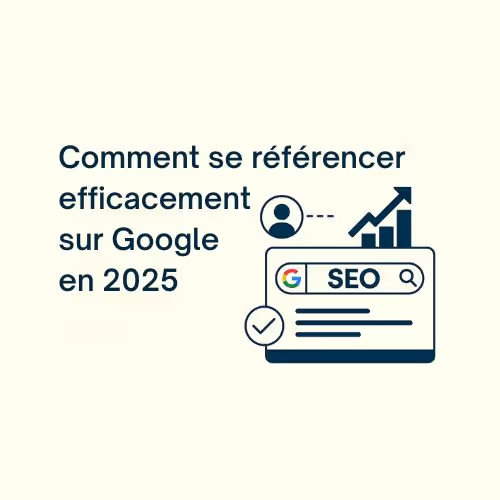Understanding SEO in 2025: The 3 Essential Pillars
To achieve strong visibility on Google, your SEO strategy in 2025 should rely on three fundamental pillars:
- High-quality content: Relevant, engaging, and structured according to user search intent.
- Flawless user experience (UX): Smooth navigation, fast-loading pages, and responsive design.
- Solid technical optimization: Clear site architecture, optimized performance, and perfect crawlability.
Embracing the Core Drivers of SEO in 2025
To implement an effective SEO strategy, it’s crucial to build on principles that reflect the current reality of organic search.
Focus on Context and Search Intent
In 2025, effective SEO relies on a deep understanding of context and a precise analysis of the user’s search intent. Rather than simply listing keywords, your content should be well-structured and relevant, providing clear, targeted answers to specific user needs.
Think Long-Term: SEO as a Strategic Vision
SEO is fundamentally a long-term endeavor. Sustainable results come from a consistent strategy supported by ongoing optimization and regularly updated content. The websites that rise in the rankings are those that commit to steady progress and continuous improvement.
Build Your Site’s Authority Through Backlinks
High-quality backlinks from trusted sources remain central to Google’s assessment of your site’s authority. A well-planned link-building strategy strengthens your credibility, boosts your SEO, and drives qualified traffic.
Aligning Content with Search Intent for Better Rankings
One of the key shifts in SEO in 2025 is Google’s focus on accurately matching user intent. Google now prioritizes content that directly answers what the user wants to know or do.
There are generally three types of search intent:
- Informational: The user is looking for an answer, definition, or tutorial.
- Commercial: The user is comparing products or exploring options.
- Transactional: The user is ready to make a purchase or sign up.
Structure your content based on these intentions to increase your click-through rates and improve conversions.
Creating High-Quality, Engaging Content
Write In-Depth Articles
- Aim for articles of 1,500 words or more, with clear headings (H2, H3).
- Answer a key question within the first few lines of the article.
- Naturally include secondary keywords and synonyms.
- Add optimized FAQs to increase your chances of appearing in featured snippets.
Meet Google’s EEAT Guidelines
Google now rewards sites that demonstrate Expertise, Authoritativeness, and Trustworthiness (EEAT):
- Mention the author and their credentials.
- Cite reliable and up-to-date sources.
- Include well-written About and Legal pages.
Optimizing the User Experience to Boost Your SEO
Google evaluates user experience quality as a ranking factor. Here’s how to improve it:
Improve Loading Speed and Site Performance
- Use tools like PageSpeed Insights or GTmetrix to audit your site.
- Compress images, enable caching, and minimize unnecessary scripts.
Ensure Responsive Design and Smooth Navigation
- Make sure your site is fully mobile-friendly.
- Build an intuitive navigation system with simple menus and logical structure.
- Add internal links to increase time spent on site and reduce bounce rate.
Mastering Technical SEO: A Game-Changer
Monitor Your Core Web Vitals
Google relies on Core Web Vitals to assess performance:
- LCP (Largest Contentful Paint): Measures loading speed of main content.
- FID (First Input Delay): Measures interactivity speed.
- CLS (Cumulative Layout Shift): Measures visual stability during load.
Optimizing these elements can significantly boost your search rankings.
Optimize Page Structure
- Use clear, unique title tags and click-worthy meta descriptions.
- Create an XML sitemap and a robots.txt file to help Google index your site efficiently.
- Structure content using well-organized header tags (H1, H2, H3…).
Conclusion: How to Succeed in SEO in 2025
To rank effectively on Google in 2025, adopt a comprehensive SEO strategy that aligns both with user expectations and the technical requirements of search engines.
By combining high-quality content, seamless user experience, and precise technical optimization, you’ll greatly improve your chances of generating sustainable organic traffic.
Keep in mind: SEO is not a one-time fix but a continuous process of improvement. Stay updated on trends, test new strategies, and adapt… and Google will reward your efforts.





